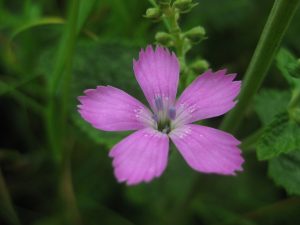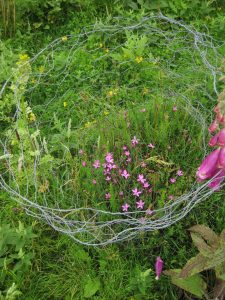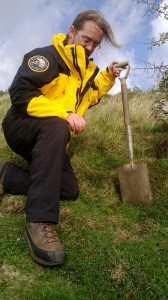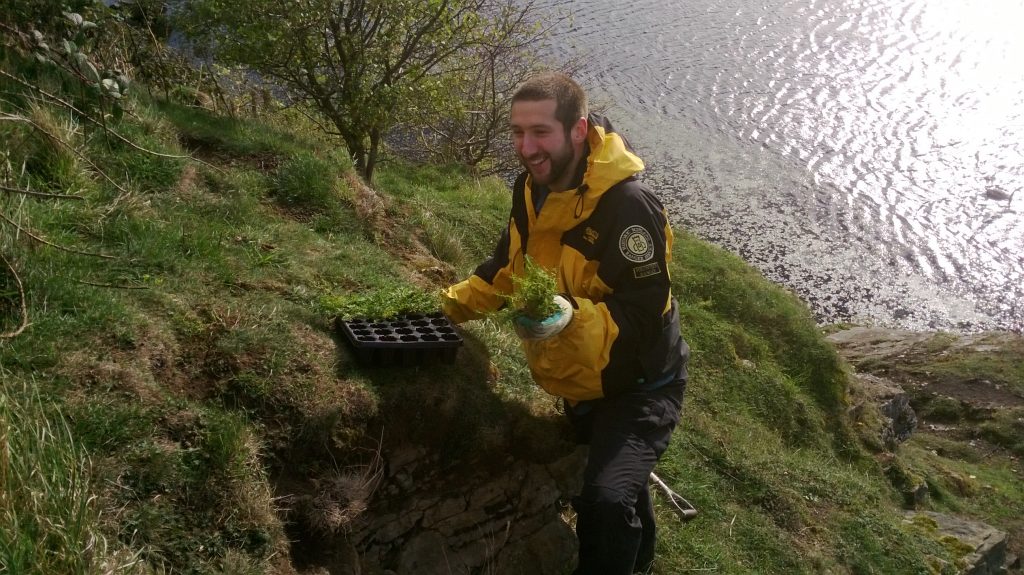Holyrood Park is home to a great variety of plants. Among them are some that are relative rarities and these are carefully monitored by the Historic Scotland Ranger Service. Wild plants have been recorded in the Edinburgh area for more than two centuries and as a result we have a picture of how the local distribution of particular rare plants has changed through time. The maiden pink (Dianthus deltoides) is an example of a plant that may never have been common, but is now at risk of local extinction having seemingly been reduced to a single population at Holyrood Park.
The earliest record of maiden pink in the Edinburgh area comes from an unpublished manuscript written by Robert Brown in 1792. Brown was a botanist from Montrose who was studying medicine in Edinburgh. Medicine and botany were closely linked at this time as so many medicines were derived from plants. Among his many plant records Brown includes the maiden pink which he saw at Blackford Hill in Edinburgh. His account suggests the plant was not particularly rare, and yet no recorded sightings of the plant at this site appear to exist after 1894 when Sonntag mentioned the plant as being found at Blackford Hill and Arthur’s Seat. Other historic sites from the 19th century include Banks of Lochend and Braid Hill.
In the 20th century four additional sites have been recorded and of these Wester Craiglockhart Hill is the only one with detailed locality information. Despite repeated survey none of these populations have been refound.
This decline is not unique and the Edinburgh Local Biodiversity Action Plan (LBAP) seeks to bring organisations and individuals together to take action for nature. The Edinburgh City Council Rare Plants Project is part of the LBAP and has highlighted two other plants in addition to maiden pink that need conservation action – sticky catchfly (Silene viscaria) and rock whitebeam (Sorbus rupicola). Action for all four species is being taken at Holyrood Park and a new reintroduction programme for maiden pink means that all three species have been part of projects that have sought to increase the numbers of plants by using locally collected seeds to grow plants for reintroduction to the wild. The Royal Botanic Garden Edinburgh helped to plant around 200 small plants of maiden pink on 9th October 2013 at five sites around Holyrood Park. The plan is to monitor the plants to see how they respond and to follow up with further introduction of plants and/or seeds sown direct in the future. If the reintroduction is successful the next step will be to return maiden pink to some of the other sites around the City where we know it grew in the past.




